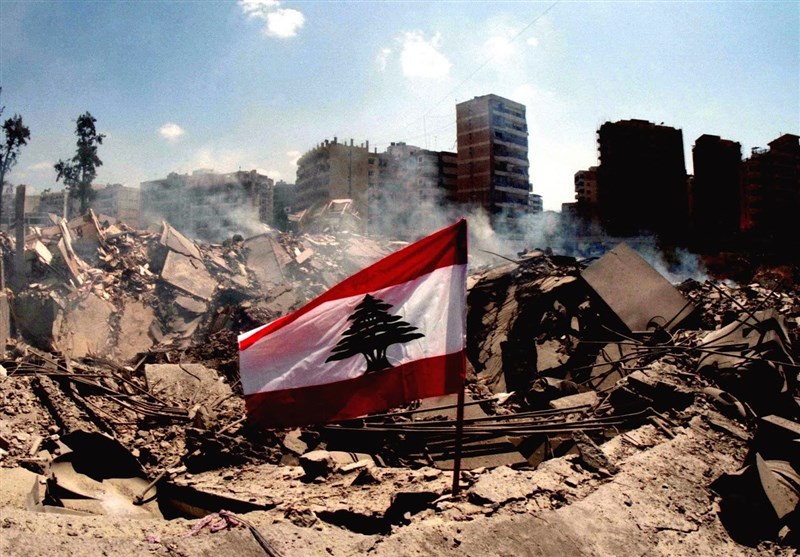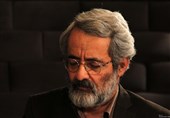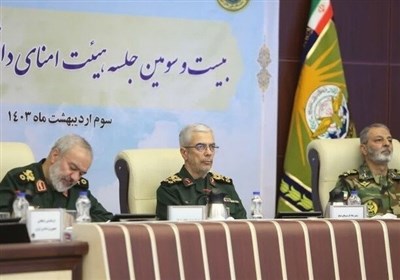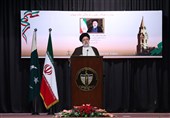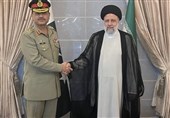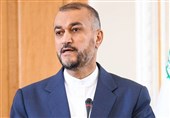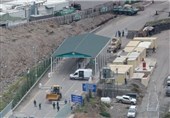An Argument against Ronen Bergman’s 'The Secret War with Iran' – 20
TEHRAN (Tasnim) – The Zionists, who had established secret communications with the Phalange Movement in 1975, imposed bloody civil war on Lebanon in 1982. They imagined they could occupy Lebanon and install a governor there before annexing it to other occupied territories.
Iranian journalist and expert Abbas Salimi Namin has disproved the claims and opinions of Israeli analyst Ronen Bergman in the book ‘The Secret War with Iran’. ‘The Secret War with Iran’, written by renowned Zionist journalist Ronen Bergman, was published in 2008 by Simon & Schuster publishing company in the United States.
Born in 1972, Bergman is a graduate of Tel Aviv University in the Middle East political relations. He is a famous Zionist journalist and analyst in the military and security fields who has worked with Israeli newspapers ‘Haaretz’ and ‘Yedioth Ahronoth’, American dailies and weeklies such as ‘The New York Times’, ‘Newsweek’, ‘The Wall street Journal’, and British media groups including ‘The Guardian’ and ‘The Times’.
Bergman has been interested in topics relating to the enemies of the Zionist regime (particularly Iran, Hezbollah and the Palestinian resistance groups), as well as subjects on the history of the Israeli regime’s assassination operations, which are cited in his recent book ‘Rise and Kill First’.
In an interview with Persian TV channel ‘Iran International’, Bergman has pointed to the Iranian nuclear program and the issues surrounding it -particularly the Zionist regime’s secret attempts to halt the process of nuclear activities in Iran and assassinate Iranian scientists. He has also cited ex-CIA chief Michael Hayden as saying that the assassination of nuclear scientists is the best way to impede Iran’s growing process in that field, and has implicitly held Israel responsible for it.
In the book ‘The Secret War with Iran’, Bergman has written a history of encounters between Iran and the Zionist regime, while the bulk of the book relates to the Lebanese Hezbollah -Iran’s main ally in the battle against the Zionist regime since its formation until the 33-day War- focusing on the role of Martyr Imad Mughniyeh.
His book also includes sections about the final years of the Pahlavi regime and victory of the Islamic Revolution in Iran, short periods of the war imposed by the Ba’thist party of Iraq on Iran (focusing on the McFarlane affair), Iran’s role in supporting the Palestinian groups, and the Iranian nuclear program.
Bergman’s multiple undocumented and untrue comments as well as personal and purposeful analyses (with the main purpose of displaying Israel’s power, especially in a competition with the US) that have repeatedly come in his book make a critical review of the book necessary for Iranian readers.
Director of the Iran History Studies and Compilation Bureau, Abbas Salimi Namin, has written an extensive criticism in a book about ‘The Secret War with Iran’. Born in 1954, Salimi Namin is an experienced journalist and a renowned Iranian researcher in history and political sciences who has published many articles and books.
About ‘The Secret War with Iran’
Part 20:
Chapter 4
The Zionists, who had established secret communications with the Phalange Movement in Lebanon in 1975, imposed bloody civil war on this country in 1982. They imagined they had a good opportunity to occupy Lebanon and install a governor there before annexing it to other occupied territories. Bergman puts it as follows: “Begin declared publicly that the aim of the war was to advance “only 40 kilometers” beyond the border, precisely the range of the rockets, in order to remove the threat. But the army’s real plan, hidden to some extent even from Begin himself, was different. Defense minister Ariel Sharon instructed the Israel Defense Forces to be ready to expel the PLO forces and the Syrians from the entire country… Through the Mossad, close ties were forged between Begin’s hawkish defense minister (most probably Ariel Sharon) and the Phalangists. It was Sharon who conceived of the war plan, behind which lay the idea of a comprehensive change in the Middle East.” (Chapter 4, p. 73)
Speaking about “comprehensive change in the Middle East” is telling enough to describe the main objective of the occupation of Lebanon; that is exactly why all of those who knew that a nation would never accept to be occupied and would instead resist and that this issue would destabilize the pillars of occupation in all occupied territories criticized the decision to occupy Lebanon.
Bergman admits to the fact that the “war was first received with some understanding”; however, he tries to blunt criticisms. “Although the war was first received with some understanding by the rest of the world, when it became clear that its aims were fundamentally different from those declared by Prime Minister Begin, Israel was subjected to unprecedented international criticism. Even President Ronald Reagan was infuriated that he had not been consulted or even informed. The continuing expansion of the fighting and the concomitant civilian casualties did nothing to ease the criticism.” (Chapter 4, p. 75)
Although one of the objectives stipulated in the “Comprehensive Change in the Middle East” was to expel Palestinian refugees from their camps in Lebanon, the author tries to attribute the horrible Sabra and Shattila massacre to just stools of Israel in a bid to scare Palestinian refugees away from this country. The important point is that the resistance of the Lebanese nation against the Zionist occupiers had started before the formation of Hezbollah, but the author sticks with his previous scenario of destroying the independent identity of resistance, saying Syrian people were supporting this resistance. In other words, he is trying to fabricate an external origin for it to justify further suppression. “The Israelis soon became the targets of a number of guerrilla forces, encouraged by the Syrians, who of course wanted to do all they could to harm the Israelis. The PLO forces commanded by Arafat retreated into Beirut, where they were besieged and bombarded by Israeli tanks and artillery. Mossad agents made sure that the commander of the Christian forces, Bashir Jemayel, was elected president, but Syrian intelligence put paid to the Israeli plan by blowing him up at a meeting at the Phalange headquarters in Beirut. The Phalange response was to massacre hundreds of Palestinians in the Sabra and Shattila refugee camps in southern Beirut. Israel was not an active partner in this atrocity, but its forces also did nothing to prevent or stop it.” (Chapter 4, p. 76)
Several points are to be reflected on: 1. The Zionists’ attempt to overshadow the resistance of nations to crimes committed against them is a deep-seated policy. Even when the Iranian nation was resisting US, British and Zionist hegemony, this resistance was wrongly tied to the Red Army in a bid to justify its suppression. As Iran was not present in Lebanon, the author points the finger at Syrians for the resistance in Lebanon. 2. A major objective of occupation of Lebanon was “comprehensive change in the Middle East”, i.e. pushing Palestinians away from their land. From the very beginning of the occupation of Palestine, the Zionists were engaged in massacre in a bid to scare Palestinians away to choose to become refugees instead of losing their life. Years later, the same policy was implemented in southern Beirut so that Palestinian refugees stationed in the Sabra and Shattila camps would flee instead of staying to die. That was how the refugees who hoped they would one day return to their occupied homeland left Lebanon. Therefore, the Sabra and Shattila massacre was clearly in line with the Zionists’ policy of driving Palestinian refugees out to Jordan. 3. Bergman gives a critical sense to his words in a bid to support the Zionists’ objectives more effectively. He claims that Syria’s Army intelligence took action against the Phalange Movement and caused problems to the Zionist scheme in Lebanon. In return, the Phalange Movement massacred ordinary people in the refugee camps. If Bergman had inserted minimum truth into his statements Israel could have easily struck a counterblow to Syrian forces, but in addition to scaring Palestinian refugees away from Lebanon, the idea has been to strike fears into the hearts of people. Contrary to Zionist propaganda aimed at painting a distorted image of the resistance of nations, they know quite well that their main issue is with the nations and not with governments. This fact has been highlighted in this chapter, an acknowledgment of the false power of the Zionists: “When the welcoming handfuls of rice that Shi’ite villagers in South Lebanon had scattered over the invading Israeli forces turned into a hail of grenades and roadside bombs, the Israeli deputy prime minister, Simcha Ehrlich, complained, “They never told us that there were Shi’ites there.” This sums up the true state of affairs: An ignorant Israeli government that never knew there were Shias in Lebanon who constituted the largest section of Lebanon’s population, or what Shias were, for that matter. Israel’s intelligence agency was dominated by messianic types who had seen what they wanted to see.” (Ibid)
In making this acknowledgement, Bergman seeks to limit the false power of the Zionists to the “then government” and the fact that executive officials did not have even basic knowledge of Lebanon. But in a stark contradiction, he sees intelligence agencies forming the very core of power of the occupiers of Palestine and acting independently (although their heads are named by prime minister) as having been fooled by the Phalange Movement in the attack on Lebanon. Therefore, if the Zionists’ intelligence agencies have been central in this field, the fundamentals of power in the occupied territories must be unstable. What puts on display the Zionists’ superficial look is the imagination that only Shias pose a threat to them. It is not clear how Bergman and more generally the occupiers of Palestine imagined that they can occupy a country, appoint a president there, and commit brutal massacres to scare people without facing any reaction. Even if residents of southern Lebanon followed another religion, would they remain totally indifferent in the face of aggression of their homeland? Hadn’t Nazi-occupied Christian nations in Europe formed underground resistance cores during WWII to fight occupiers in order to secure the release of their nation? How come the massacre of German troops through planting bombs at their barracks or on their routes was assessed as heroic, but the Lebanese nation’s resistance against 18-year occupation by the Zionists is billed as inhumane and terrorist and this patriotism is attributed to external powers? In a bid to play down Lebanon’s resistance even before Hezbollah was formed, Bergman points to Syrian people has having stimulated resistance to Zionist forces.
Another policy followed up on in this chapter is to paint a dependent image of Hezbollah. The author tries to create the impression that in Lebanon, there was no strong motivation for resistance and that Iran had imposed its will on this country regarding the necessity of resistance to invading forces. But the fact is that the Zionists’ crimes and agents, i.e. Phalange Movement in Lebanon, triggered resistance. Of course, Tehran strengthened this resistance front in a principled manner, as it is customary in international relations, without seeking to nurture any “agent” for itself. Today, even Christians of Lebanon see Hezbollah as the symbol of resistance and protector of their own dignity. Despite external pressure from pro-Zionist front in Europe and the US, the Christian president of Lebanon sees Hezbollah as an integral part of the country. Hezbollah never called for the establishment of an Islamic government in Lebanon, and despite enjoying the highest popularity, it never sought to change the traditional political structure of the country. Therefore, whatever Bergman refers to as “subjection” of Christians is untrue and in total contradiction with the political behavior of Hezbollah. “The aims of Hezbollah (or its embryonic name, “The Organization of the Oppressed on Earth”) were predictable: the ejection of foreign forces, primarily those of Israel, the United States, and France; the final eradication of the Jewish State; the liberation of Jerusalem; and the subjection of the Lebanese Christians to Islamic law.” (Chapter 4, p. 80)
